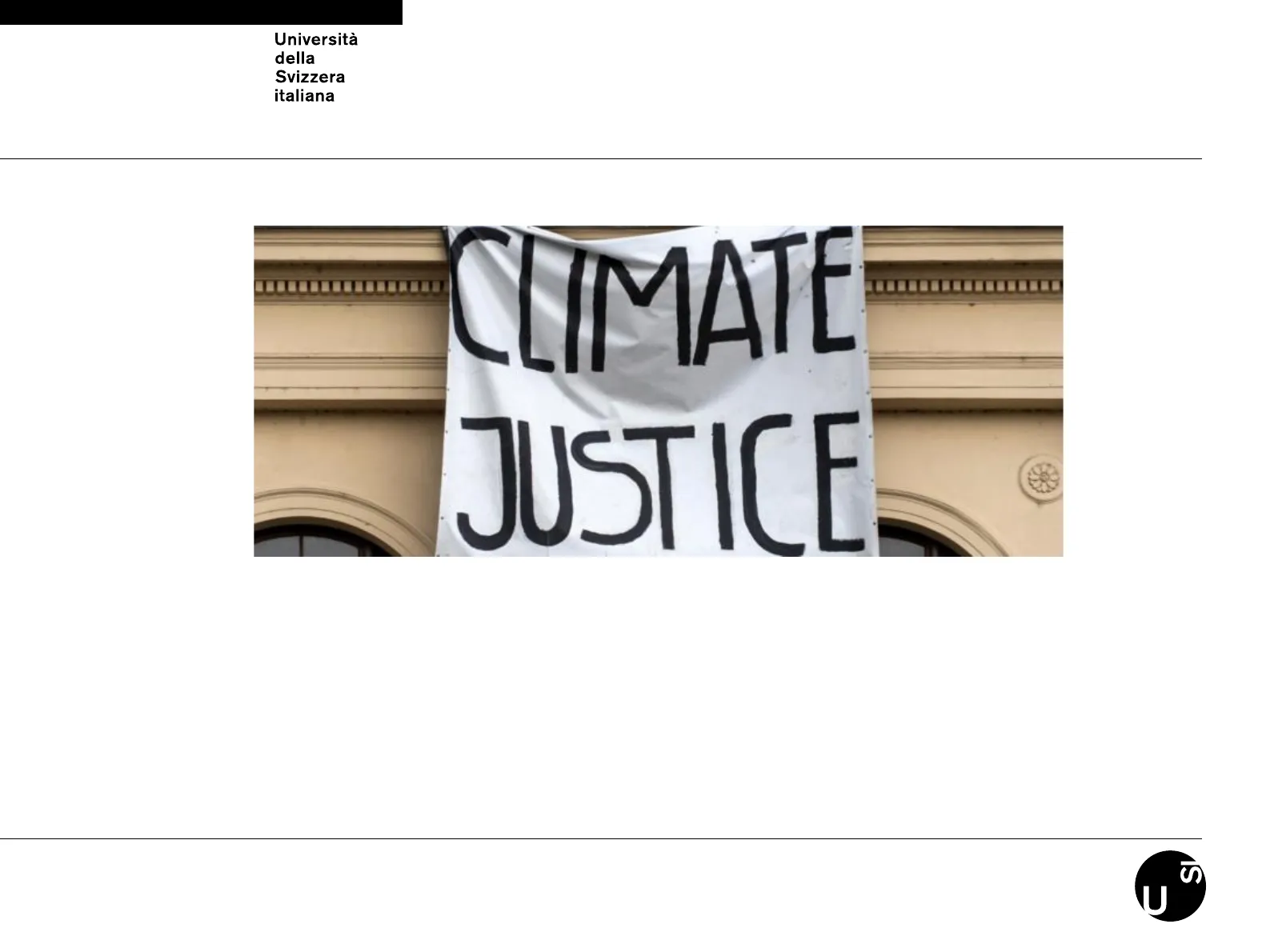Environmental Law and Policy: Carbon Pricing and EU ETS Evolution
Slides from Università Della Svizzera Italiana about Environmental Law and Policy. The Pdf explores carbon pricing policies and the EU Emission Trading Scheme (ETS), including its phases and market stability. This University level Law material, authored by an expert, provides a structured discussion on international climate regimes.
See more31 Pages


Unlock the full PDF for free
Sign up to get full access to the document and start transforming it with AI.
Preview
Università della Svizzera italiana
Environmental Law and Policy
Lecture 6 - Carbon Pricing Policies
Prof. Dr. Ilaria Espa
Academic year 2024/2025 - Spring Semester
1
SIUniversità
della
Svizzera
italiana
In-Class Structured Discussion - UNIT 2: Climate Justice
Based on the video and the reading provided, please answer the following
questions:
- What potential consequences could the ICJ advisory opinion have on the
future implementation of the Paris Agreement, particularly regarding
state obligations and compliance mechanisms? - What are the key challenges under the current international climate
regime regarding the relationship between developed and developing
countries?
2
SIUniversità
della
Svizzera
italiana
Lecture 6 - Carbon Pricing Policies: Learning Objectives
Learn Concepts:
- Explain what are market-based instruments and carbon pricing
policies to fight climate change - Explain what are emission trading schemes, carbon taxation and
offsetting schemes - Explain the impact on climate change of market-based instruments
- Explain the features of the EU ETS and Fit for 55 Reform Package
Learn how to apply concepts:
- Assess whether market-based instruments are effective tools to fight
climate change
Evaluate the strenghts and weaknesses of market-based instruments
3
SIUniversità
della
Svizzera
italiana
Lecture 6 - Carbon Pricing Policies: Outline
1. Defining Market-Based Instruments
1.1 Overview
1.2 Carbon Pricing Instruments
1.3 Carbon Pricing in the World
2. Main Carbon Pricing Instruments
2.1 Emission Trading Schemes (ETSs)
2.2 Carbon Taxation Schemes
2.3 Offsetting Schemes
3. External Impacts of Carbon Pricing
4. EU: Climate Targets & Policy Pillars
4.1 EU ETS: Introduction
4.2 EU ETS: Evolution
4.3 EU ETS: Fit for 55 Reform & Main Expected Outcomes
5. Switzerland: Climate Targets & Policy Pillars
5.1 Switzerland: Carbon Pricing Policies
5.2 Switzerland: ETS & EU CH Linkages
5.3 Switzerland: CO2 Levy
4
SIUniversità
della
Svizzera
italiana
1. Defining Market-Based Instruments - 1.1 Overview
Market-based instruments are indirect regulatory instruments ->
they influence actors' behavior by changing their economic incentive
structure
- Costs from environmental externalities (e.g., GHG emissions)
are usually not reflected in consumption or investment decisions
but are nonetheless imposed on third parties
By attaching a cost to environmental externalities, market-based
instruments carry a price signal and provide an incentive to the
polluter to reduce this impact
In climate change, internalization is mainly done through
carbon pricing instruments
5
SIUniversità
della
Svizzera
italiana
1.2 Carbon Pricing Policies: Options
Setting an adequate price for carbon that allows for flexibility and
cost effectiveness
Instead of dictating who should reduce emissions where and how,
a carbon price provides an economic signal to emitters, and
allows them to decide to either transform their activities and lower
their emissions, or continue emitting and paying for their
emissions
There are three main options to place a price on carbon
Emission Trading Schemes
Carbon Taxes
# Offsetting Mechanisms
They can either be internal or international mechanisms
6
SIUniversità
della
Svizzera
italiana
1.3 Carbon Pricing in the World: 2024 Overview
Carbon pricing instruments around the world, 2024
= Download
Map shows jurisdictions that have implemented Direct Carbon Pricing Instruments - Compliance instruments (Emissions Trading Systems (ETS) and Carbon taxes) and/or domestic carbon crediting
mechanisms, subject to any filters applied. The year can be adjusted using the slider below the map.
+
-
IMPLEMENTED INSTRUMENTS
Compliance
Crediting
Both
Instrument Type:
Emissions Trading System,
Carbon Tax,
Crediting Mechanism
Compliance instruments include ETSs and Carbon taxes. Compliance instruments are considered "Implemented" once they have been formally adopted through legislation and compliance
obligations are in force and enforced. Crediting mechanisms are considered implemented if they have issued credits (or have frameworks in place to allow credits to be used domestically,
such as in South Africa).
7
Interactive map: https://carbonpricingdashboard.worldbank.org/
SIUniversità
della
Svizzera
italiana
1.3 Carbon Pricing in the World: Initiatives and Revenues
Carbon pricing initiatives are on the rise, but efforts remain mainly
national/subnational
As of 2024, there are 75 carbon pricing instruments in operation
worldwide, covering 24% of global GHG emissions (World Bank,
2024).
In 2023, carbon pricing revenues reached $104 billion.
36 ETSs and 39 carbon policies have been implemented so far.
50 national jurisdictions and 39 subnational jurisdictions are
covered by the initiatives selected.
Offsetting schemes are mainly international.
Kyoto regime (JI and CDM) and Article 6 Paris Agreement regime
8
SIUniversità
della
Svizzera
italiana
2. Main Carbon Pricing Mechanisms - 2.1 Emission Trading Schemes (ETS)
Systems where emitters can trade emission allowances to meet their emission
targets
- Regulated entities can either implement internal abatement measures or
acquire emission units in the carbon market, depending on the relative costs
of these options - By creating supply and demand for emissions units, an ETS establishes a
market price for GHG emissions
The two main types of emission trading schemes are:
- Cap-and-trade systems > a cap or absolute limit on the emissions is set
within the ETS and emissions allowances are distributed, usually for free or
through auctions, for the amount of emissions equivalent to the cap - Baseline-and-credit systems > baseline emissions levels are defined for
individual regulated entities and credits are issued to entities that have reduced
their emissions below this level
9
SIUniversità
della
Svizzera
italiana
2.2 Carbon Taxation Schemes
Systems that define an explicit tax rate on GHG emissions or-
more commonly-on the carbon content of fossil fuels (i.e. a
price per CO2).
Many countries apply a carbon tax levy on consumer
through a tax on fuel consumption 'at the pump' (others
apply it to producers)
Contrary to ETS schemes, the emission reduction outcome of a
carbon tax is not pre-defined.
10
SIUniversità
della
Svizzera
italiana
2.3 Offsetting Schemes
Systems that designate the GHG emission reductions from
project- or program-based activities, which can be sold either
domestically or in other countries
Offset programs issue carbon credits according to an
accounting protocol and have their own registry
These credits can be used to comply with national targets
set by an international agreement (e.g. Kyoto quantified
targets, NDC targets) or domestic policies
Main compliance schemes (vs voluntary markets) were the JI
and the CDM under the Kyoto Protocol regime and now rely on
implementation of Article 6 of Paris Agreement.
11
SIUniversità
della
Svizzera
italiana
3. External Impacts of Carbon Pricing
Carbon pricing comes with a cost for countries implementing it, given the
absence of an international price on carbon.
Growing policy heterogeneity, as allowed by the Paris Agreement.
Mounting opposition in the context of national pushbacks
Competitiveness concerns -> focused on the economic consequences
of carbon pricing
Carbon leakage concerns > focused on the environmental
consequences of carbon pricing
Momentum for the introduction of border carbon adjustments (BCAs) or
carbon border adjustment mechanisms (CBAM) (see next class)
Trade-related policy response to achieve symmetry in the treatment of
domestic and foreign products and keep/increase the ambition of carbon
pricing instruments
12
SIUniversità
della
Svizzera
italiana
4. EU Climate Targets
EU - Main climate targets
2030 unconditional NDC target
Formulation of target in
NDC
Economy-wide net domestic reduction of at least 55% in greenhouse gas
emissions by 2030 compared to 1990
Absolute emissions
2307 MtCO2e
level in 2030 excl.
[52% below 1990]
LULUCF
[44% below 2010]
Status
Submitted on 19 October 2023
Net zero & other long term targets
Formulation of target
Net zero domestic GHG emissions by 2050 at the latest
Absolute emissions
295 MtCO2e
level in 2050 excl.
[94% below 1990]
LULUCF
[93% below 2010]
Status
Submitted on 06 March 2020
Source: https://climateactiontracker.org/countries/eu/targets/
13
SIUniversità
della
Svizzera
italiana
4. EU Climate Targets: EU Green Deal Pillars
Climate Social
Fund
Emissions trading
for road transport
and buildings
Carbon Border
Adjustment
Mechanism
EU Emissions
Trading System -
for power, industry.
maritime &
aviation
Land Use,
Land Use
Change, and
Forestry
Regulation
Energy
Taxation
Directive
EU Forest
Strategy
2030
CLIMATE
TARGETS
Energy
Efficiency
Directive
Effort Sharing
Regulation
Renewable
Energy
Directive
Altemative
Fuels
Infrastructure
Regulation
CO2
emissions
standards
for cars and
vans
FuelEU
Maritime
Initiative
ReFuelEU
Aviation
Initiative
14
Source:
https://ec.europa.eu/commission/presscorner/api/files/attachment/869414/Architecture_F
actsheet_EN.pdf
SIdella
italiana
Università
Svizzera
4.1. EU Emission Trading Scheme (ETS): Introduction and Historical Development
1990
1991
1992
1993
1994
1995
1996
1997
1998
1999
2000
2001
2002
2003
2004
2005
2006
2007
2008
2009
2010
2011
2012
2013
2014
2015
2016
2017
2018
2019
2020
2021
2022
2023
2024
2025
2026
2027
(source: EEA)
Historical development of European CO2e emissions and road-ahead
C
SI
15
· EU-27: 2030 (-55 %)
- EU-28: Historic greenhouse gas emissions
EU-28: Historic ETS Emissions
EU-27: Historic greenhouse gas emissions .
EU-28: Historic Aviation Emission
EU-28: Historic ESD EmissionsUniversità
della
Svizzera
italiana
4.1. EU Emission Trading Scheme (ETS): Introduction and Targets
EU climate goal 2030:
-55 % vs. 1990
Energy Brainpool
Old ETS:
- 43 % vs. 2005
New ETS:
- 61 % vs. 2005
Climate-Action-Regulation
(Non-ETS) :- 40 % vs. 2005
Energy sector, industry, as
well as air and maritime
transport
Building and street
transport (Upstream)
National emission targets
have to be increased
according to EU effort
sharing
16
Emission reduction targets by 2030 in different measures and sectors
SI